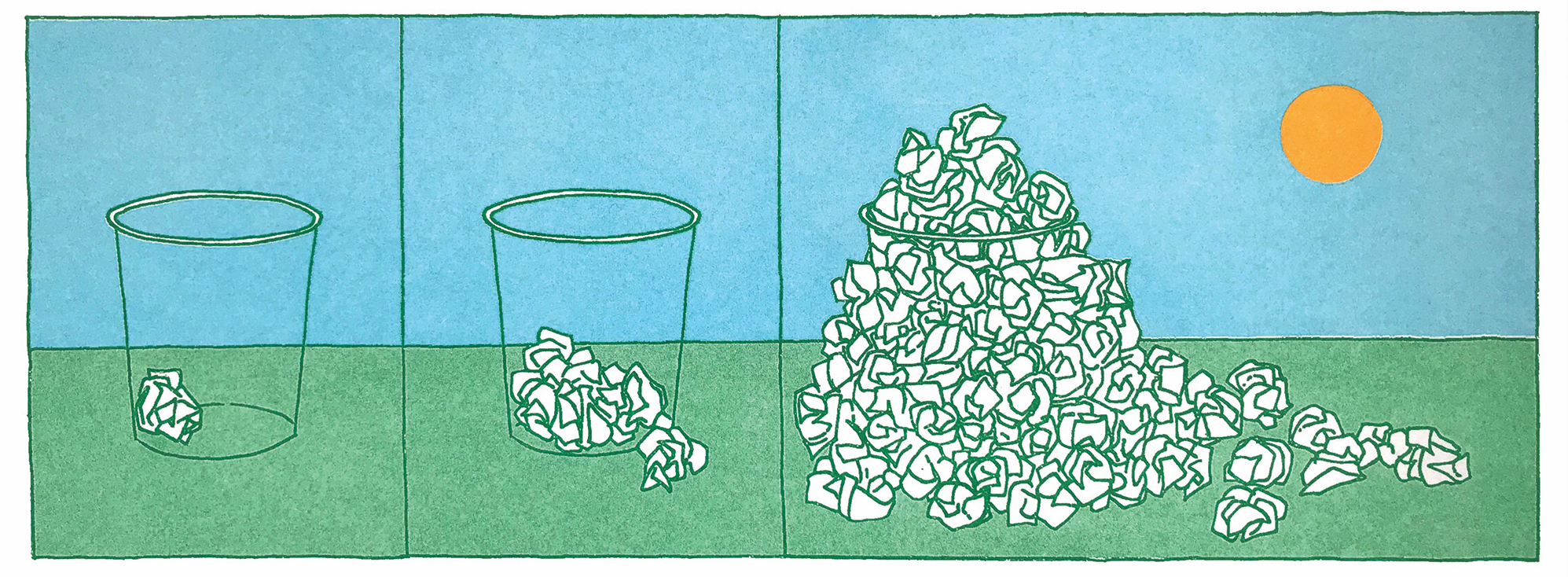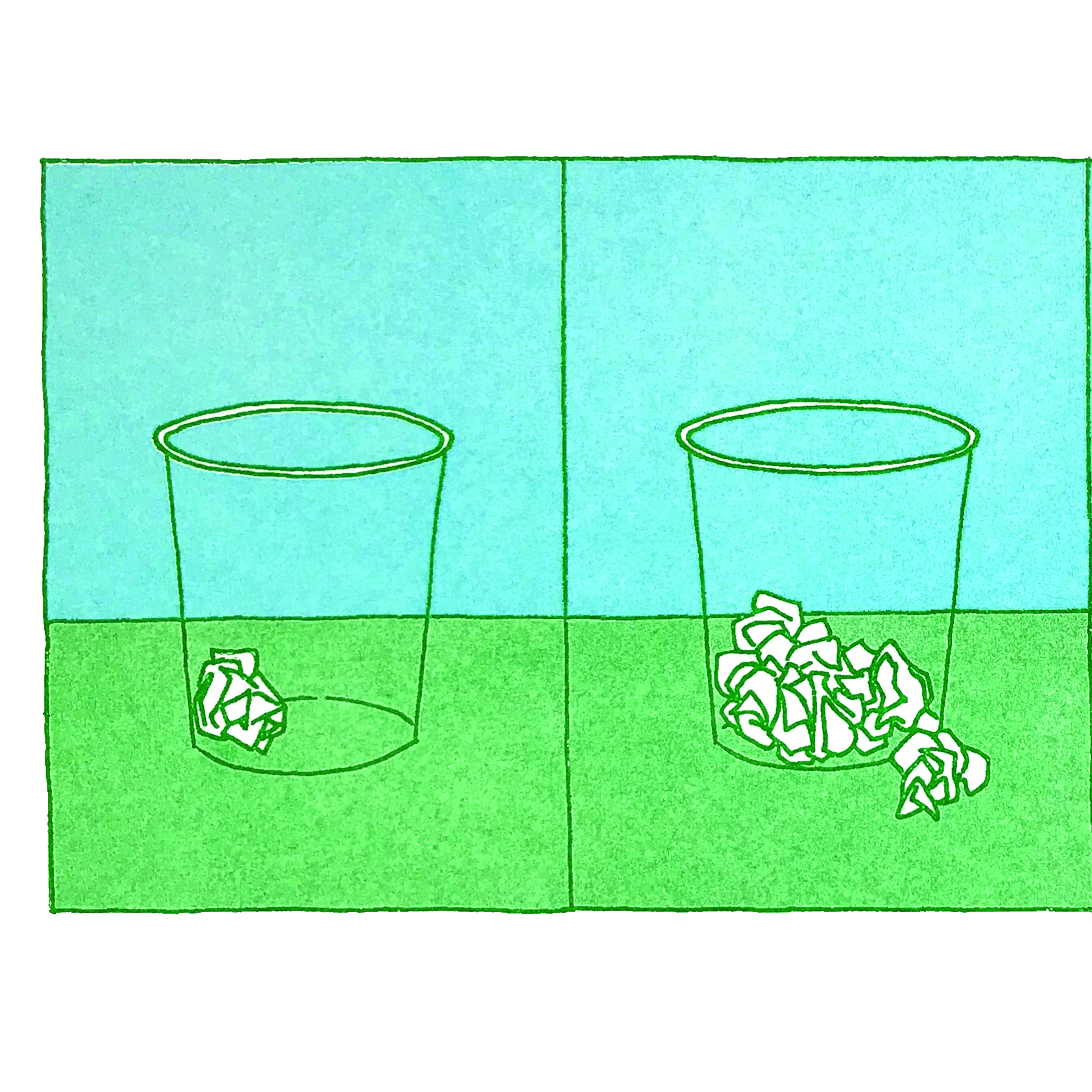
Rejection is something everyone has experienced, particularly in the competitive creative industry, yet few are willing to discuss it openly. While it might be easy for those who have found success to share stories of earlier setbacks, there remains a culture of silence and shame around the question of falling short. What about those who keep ‘failing’ and never make it to the top, struggling for decades in pursuit of their dreams?
“People are very ashamed to say that they’ve failed,” artist Lindsey Mendick says. “People don’t want to seem like they applied for things. It’s like it’s unfashionable to look like you wanted something.” She is candid about the challenges faced by those in the arts: “People are so disgruntled by their own careers that it makes them more competitive. If there were a good amount of opportunities for everybody, we probably would be kinder to each other.” This year has seen her mount two institutional exhibitions in London and Birmingham, with the latter involving a lengthy application process. “You can’t sit around and wait for people to give you opportunities because ultimately no one knows who you are.”
“I hate the criticism that it looks easy,” she goes on. “A lot of people think that I’m just getting asked to do these things, but I’ve hardly ever done an exhibition where I was asked.” In an industry obsessed with the myth of the artistic genius, and a culture enamoured with overnight success, it is easy to be seduced by the fantasy. But the reality is that many who embark on careers in the arts are unprepared for the tedium of grant applications and the volume of administration. Mendick describes writing them during her breaks while working in a vintage clothes shop, and later as a personal assistant. “You need the time to make these applications. Every moment I could, I would add to the file on my desktop and apply.”
“People are very ashamed to say that they’ve failed. It’s like it’s unfashionable to look like you wanted something”
Artist Jane Hayes Greenwood agrees with Mendick: “There’s a shame attached to making applications and not getting them. I know artists who have not said anything because they were too embarrassed.” Alongside her practice, Hayes Greenwood is the co-founder and director of Block 336, an artist-run project space opened in 2012 in South London. “For the first two years we ran everything on next to nothing,” she says, “I was just winging it.” In 2015, she decided to bite the bullet and fundraise; they have received Arts Council funding since 2016.
“Funding remains quite opaque in the art world, and it’s something that people don’t often discuss,” she says. “Inevitably, lots of artists (even ones who are considered “successful”) receive rejections often, and there is a lot of labour that goes into doing the application in the first place—you feel like you should get 50 grand just for completing it!” The visual arts must compete with all other creative art forms for funding in the UK, including theatre and music, and budgets are increasingly tight. “It feels so unfair if you don’t get it, and it’s all that work which is unpaid,” Hayes Greenwood adds. “You get a generic rejection email, and it’s harsh. I don’t want to demonise the Arts Council, but it can feel totally impenetrable.”

It is rare for artists to receive adequate training for this, hurdles that will arguably shape their careers. Artist and photographer Joy Gregory has taught at art schools around the UK since 1986. “At postgraduate level students are taught how to write grant applications, but not so much at undergraduate,” she explains. “Many artists find it very difficult to process these things; I’m dyslexic myself.” To combat this issue, art critic duo The White Pube launched an online library for successful funding applications earlier this year. Their aim is to demystify the process, inviting artists to upload their applications in full for others to reference.
Gregory believes that the art world has not only become a more competitive place over the years, but that the very definition of success has mutated: “When I was at college, there was a lot of sharing. You told your friends if you didn’t get your grant and moaned over your beer, but after the 90s there were very few places where you could get funding and a lot more private foundations.” She identifies a shift that took place during the decade, when art, money and power began to be discussed in the same breath. “I was really shocked when a first-year in the late 90s asked, ‘How do I become famous?’ I was like, why do you want to become famous? But that became the benchmark, that your name would be everywhere and people would buy your work for vast sums of money. Suddenly, being an artist was like being a pop star.”
For most artists, the promise of extreme wealth, glamour and international influence will never materialise. According to a report published in 2019 by Arts Council England, artists earn an average of £16,150 each year, of which just £6,020 comes from their art practice. “It’s a lot like pro football,” Hayes Greenwood says, “there are so many amazing footballers out there, but a tiny percentage who get picked for the national teams.”
“I was shocked when a first-year in the late 90s asked, ‘How do I become famous?’ Suddenly, being an artist was like being a pop star”
Dallas-born artist Gray Wielebinski has experienced the particular challenge of seeking funding in the United States, as well as the added precarity that comes with your healthcare being tied to your job—for those who are freelance or part-time, there is even more pressure to make ends meet. Based in London for the last four years, they believe the UK has offered them greater opportunities than back home, but it hasn’t been easy. “Being an artist makes you inherently vulnerable,” they say. “You’re putting yourself out there to be judged. I don’t know any artist who is supremely trained in handling rejection, and it’s something that’s so often thrown at us.”
The millennial generation has long been primed to expect failure, but some deal better with rejection than others. Out of these conditions has emerged an avid market that repackages failure as success—from the haphazard heroine of Phoebe Waller-Bridge’s Fleabag, to Dolly Alderton’s bestselling laments on her lacklustre love life, to journalist Elizabeth Day’s hugely popular How to Fail podcast, tour and subsequent memoir; her latest release is titled Failosophy. The contradictions inherent in building a lucrative mainstream venture out of failure are difficult to ignore; they create a dangerous false narrative around what it means to truly fail. In a system that is rigged to favour the few, not many get to turn their ‘failure’ into success.
Unsurprisingly, series and books like these centre the perspectives of white, wealthy individuals, whose inherited privilege offers a safety net which makes the prospect of failure a less risky undertaking. In an individualistic culture obsessed with resilience and tenacity, the inability to ‘bounce back’ can feel like the greatest failure of all. “Some people might be more comfortable sharing their failure,” Wielebinski asserts, “if they’ve been allowed countless chances; or if they’ve been encouraged to persevere their whole life; or if they’re told that they’re talented; or they have certain support systems. Others might feel like they only have a couple of shots at a career in the arts before they have to quit.”

Meanwhile, the fees for open-call competitions may limit the number of times that one can apply. Familial responsibilities such as childcare, which typically fall upon women, also take their toll. It is not uncommon for competitions to be age-limited: “I’m now over 30, so I’m not eligible for a lot of young artist grants,” Hayes Greenwood, who recently had a baby, says. “There’s a fetishisation of youth, emerging talent, that idea of something new and undiscovered.” Mature students, who may have had both a career and children, are left unable to apply to certain grants when they enter the arts later in life.
Mental health plays a role in being willing to share failure publicly or even with friends—a condition often worsened by social media. Mendick is one of a number of artists breaking this silence. Earlier this year, she shared her career rejections via Instagram, inspired by a similar initiative started by Zadie Xa and Jesse Darling. “I’ve been rejected by New Contemporaries so many times, but I’m not allowed to say that it bugged me,” Mendick says. “It feels kind of defiant to say, nope, never got that one to my bow.”
“It’s a lot like pro football. There are so many amazing footballers out there, but a tiny percentage who get picked for the national teams”
Social media offers artists a valuable platform to air their grievances and share their work, but it also drives an attention economy that adds to the pressure to constantly perform. “I’m guilty of only posting about my successes,” Hayes Greenwood admits. “I don’t write about the things that I didn’t get. Success is really attractive. Even the people who are kind of annoying with it, you still are drawn to it; you still want to follow it. It reflects how the art world is so unbalanced. It’s seductive and repulsive in equal measure.”
Failure is an inevitable part of any artistic practice, but when it becomes a barrier to entering or sustaining a career in the arts, it threatens to further narrow an industry already defined by its inequities. Wielebinski argues that it’s about recognising and claiming back some of that power through alternative modes of encouragement, stability, support and validation. Gregory echoes this sentiment, saying, “I try to encourage students to build connections with each other in the institution, and encourage people to collaborate and build up their networks. It’s not an easy path and they can help each other to get through this.”
The myth of a meritocracy prevails in the art world, seductively entwined with the forces of advanced capitalism. For this to be overcome, maybe we need to address the narrative not only around failure but on what it means to triumph. “Everyone’s working hard for their successes, but it’s also important to recognise that some of it is placed on luck or opportunities or timing,” Wielebinski concludes. “Maybe we don’t need to pat ourselves on the back quite as much for our successes.”
All illustrations © Antonia Stringer for Elephant





